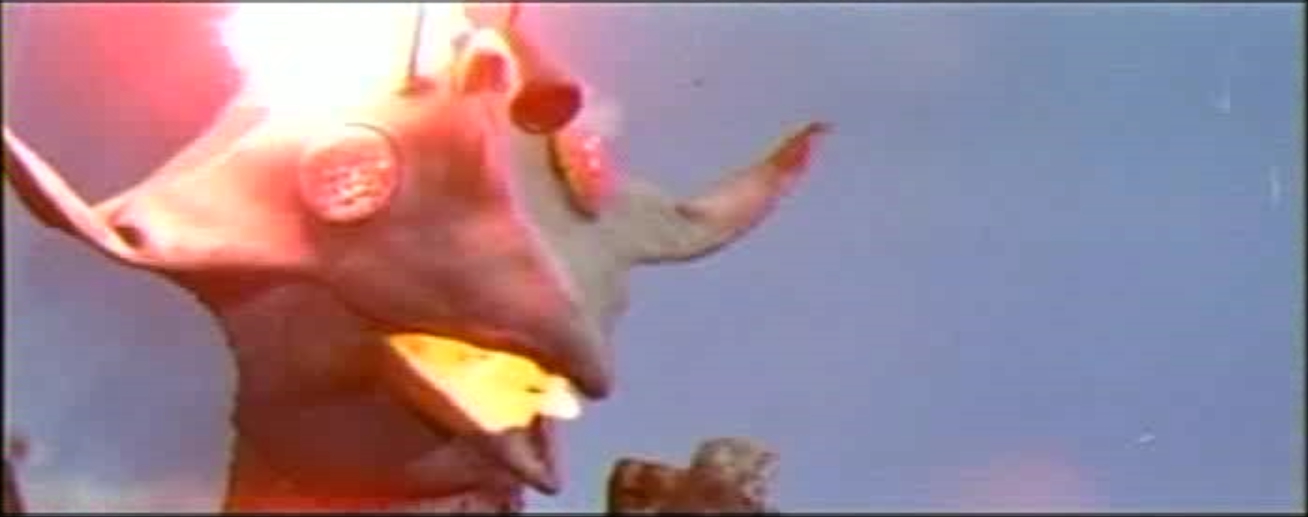
Released in the US as The X From Outer Space, Giant Space Monster Guilala (1967) is the only giant monster film from Japanese film studio Shochiku. It starts off with a lounge-act song over the initial credits. Which is a heck of a thing, especially as the film exhorts the listener to embrace the twinkling future. Given that this is a giant monster film, I cannot help but think that this is somewhat at odds with the embrace of future technology, since many kaiju films are about humanity being punished for scientific transgressions.
For the first time since the 1965 Gamera, this is a rampage movie. As with virtually every other franchise, thism, the first film, has the monster alone against the military and the team of scientists. Guilala does return, in 2009, with Monster X Strikes Back.
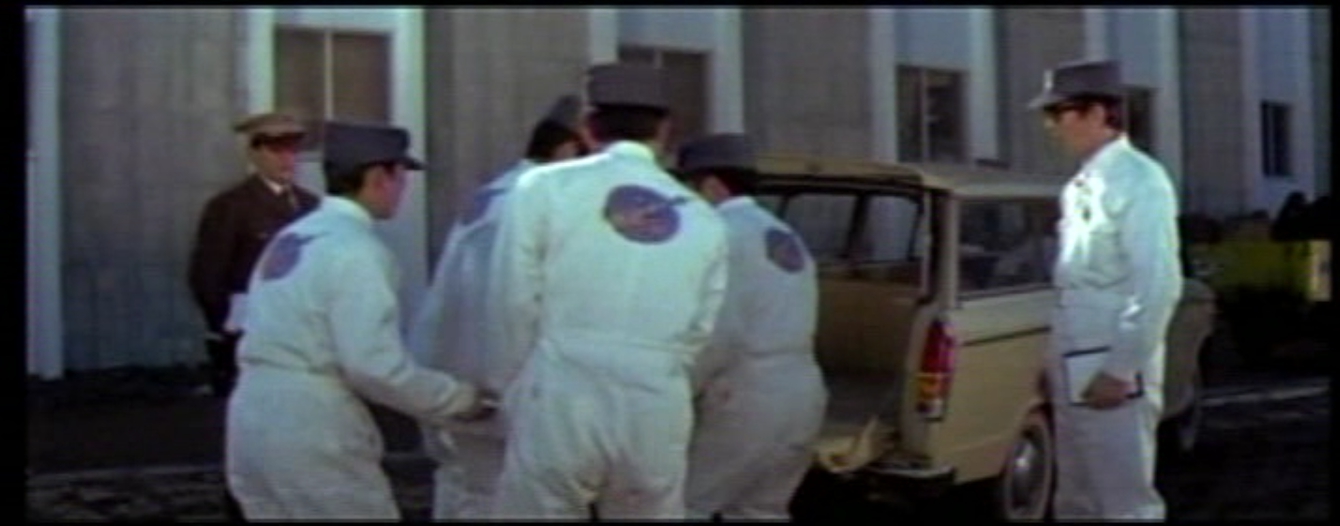
The film follows the Fuji Aeronautical Flight Center, the sort of agency that cropped up with regularity in space-race era films. Our first experience is watching four white jumpsuited figures carry enriched nuclear fuel and put it in the back of a station wagon. If that's not space-age professionalism, I don't know what is. This space agency is launching missions to Mars, and anticipating the Galactic Ghoul of the 90's, has long a number of missions previously. Of course, the lost missions were all manned, and the spaceship they're sending, AAB Gamma the agency's first nuclear ship, is unarmed. What could possibly go wrong?
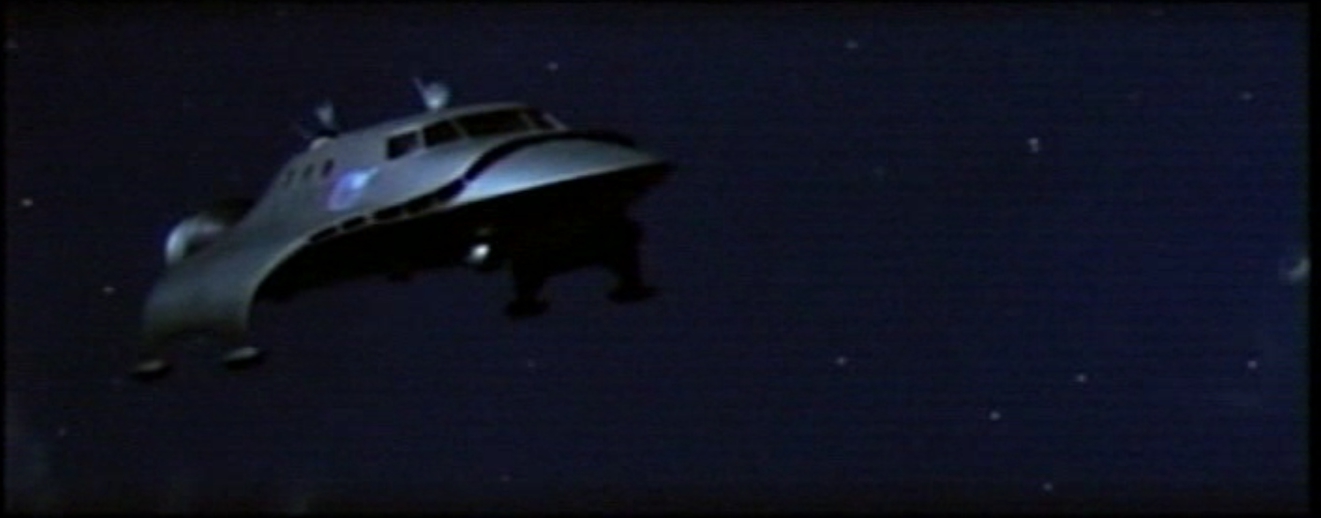
The anticipated problem, UFO interferance, happens, and the ship has to divert to the lunar base because Dr. Shioda has gotten ill from the UFO's approach. And who has to tend his fevered brow and brng him a drink? Why Lisa, the blonde, and the only woman on the crew. Huh. Blonde Lisa is also involved in a love traigle with the Sano, captain of AAB Gamma, who thinks he likes her, but really belongs with Michiko. Despite this early, dismissive treatment, the character of Lisa has a lot of agency, and that's a welcome relief from most kaiju films, which shove the female characters into stereotypical and passive roles. In fact, she is the discoverer of just about all the research that defeats Guilala will come from her. But she starts out as a Space Stewartess.
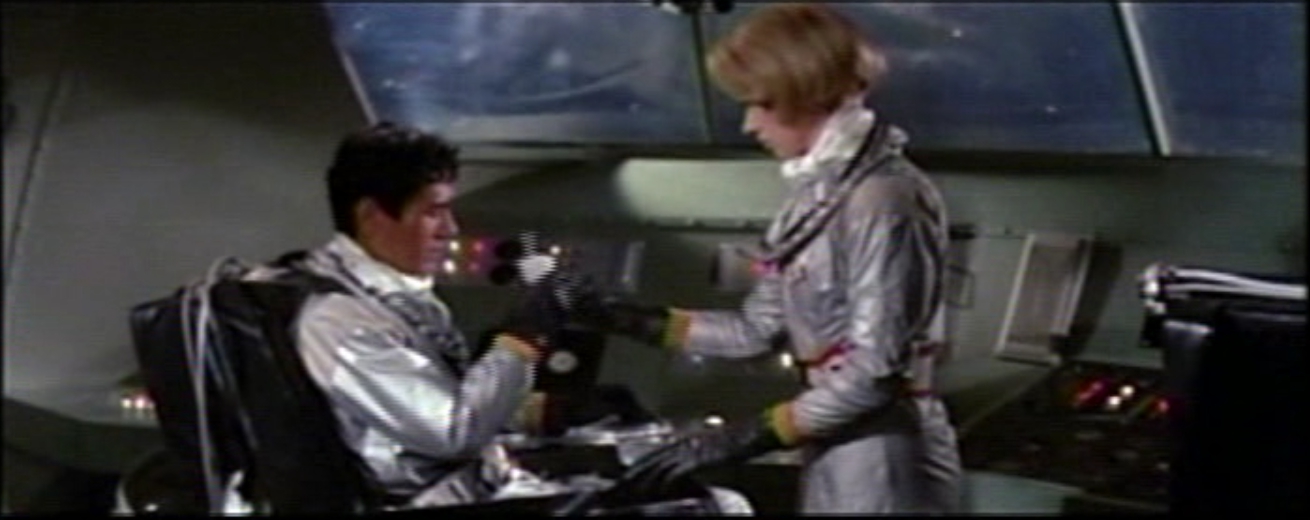
The Lunar colony AAB Gamma aborts to has been established so long that the inhaitants smoke, raise apples, and even have a hot tub and hot showers. This allows Lisa and her rival Mickiko share a tame but titillating shower scene.
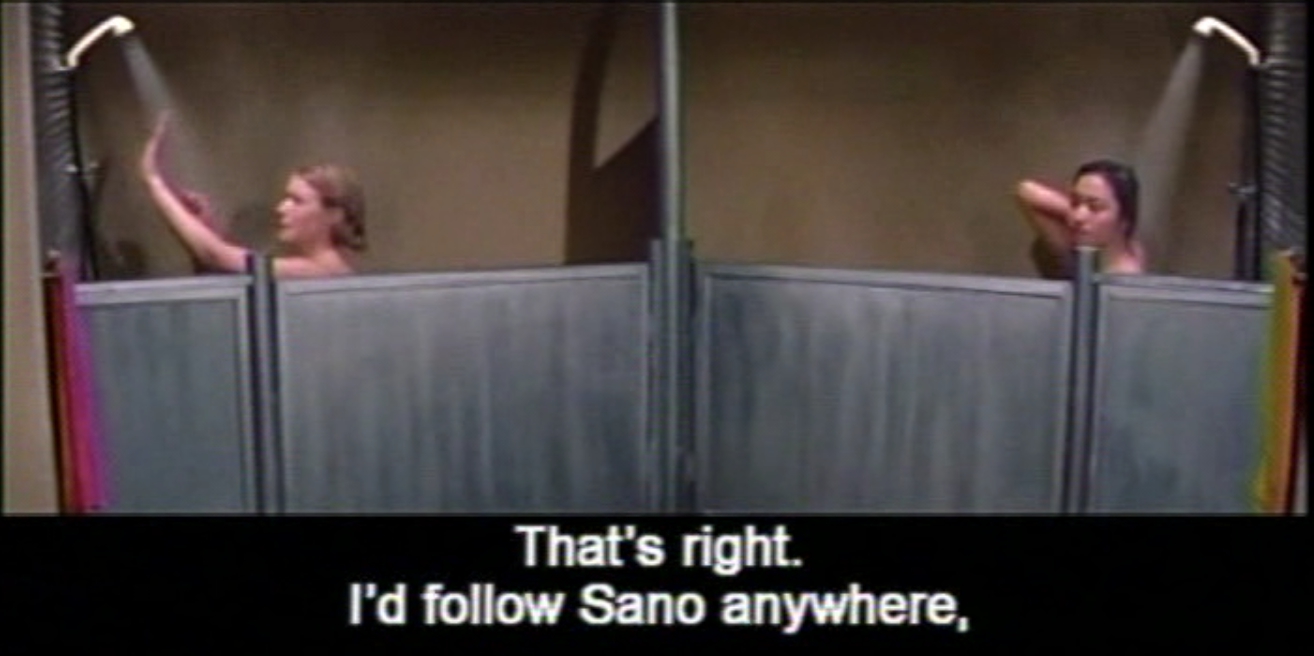
Once AAB Gamma gets back underway to Mars, it's buzzed by a UFO, and then discovers that the engine has developed some lumps, as if it had gotten glowing Space Herpes. It's collected and kept in a vacuum, and brought back to Earth. There, it melts the container, and then goes through the floor, in a discovery that's uncomfortably like a section of Ridley Scott's Alien.
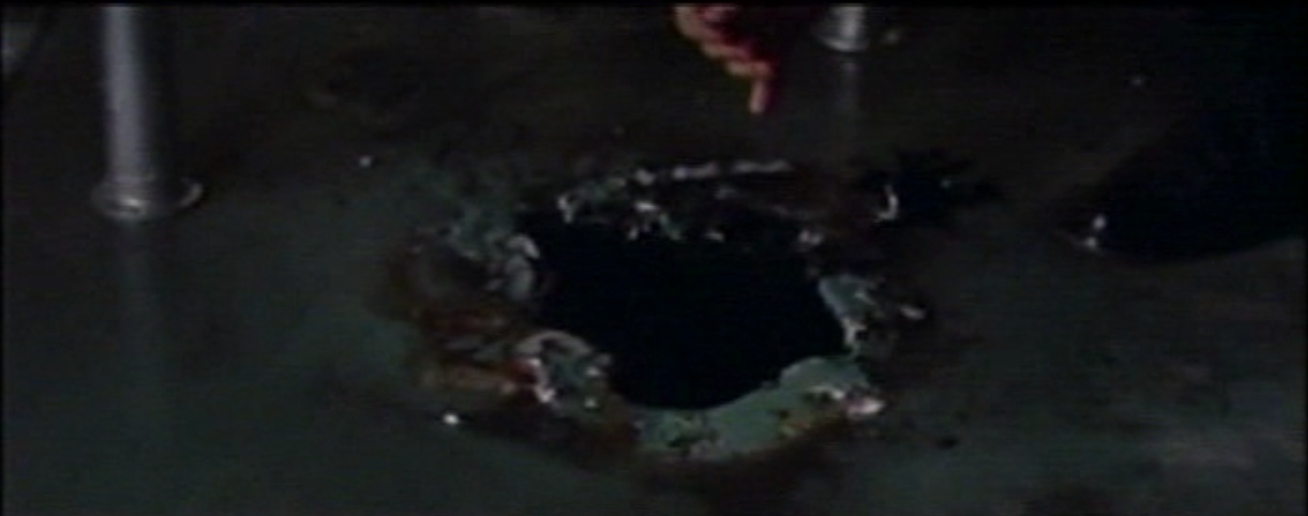
In an interesting twist on the usual gigantic footprint trope that has been used from King Kong to Pacific Rim, Guilala's initial spoor it a tiny track etched into the floor of the lab, giving no indication of the size it will eventually achieve. The gigantic footprint is later discovered, giving the characters the link between the huge monster and what escaped from their lab. Guilala is often referred to as giant poultry, and that's no accident. When viewing the small footprint, it is compared to a three-toed chicken footprint.
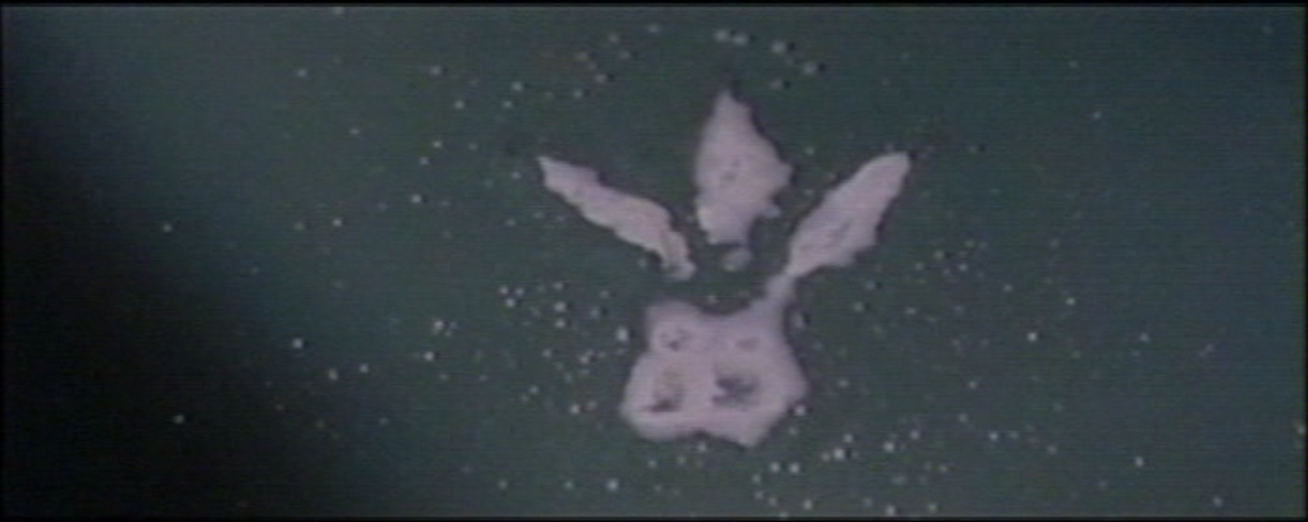
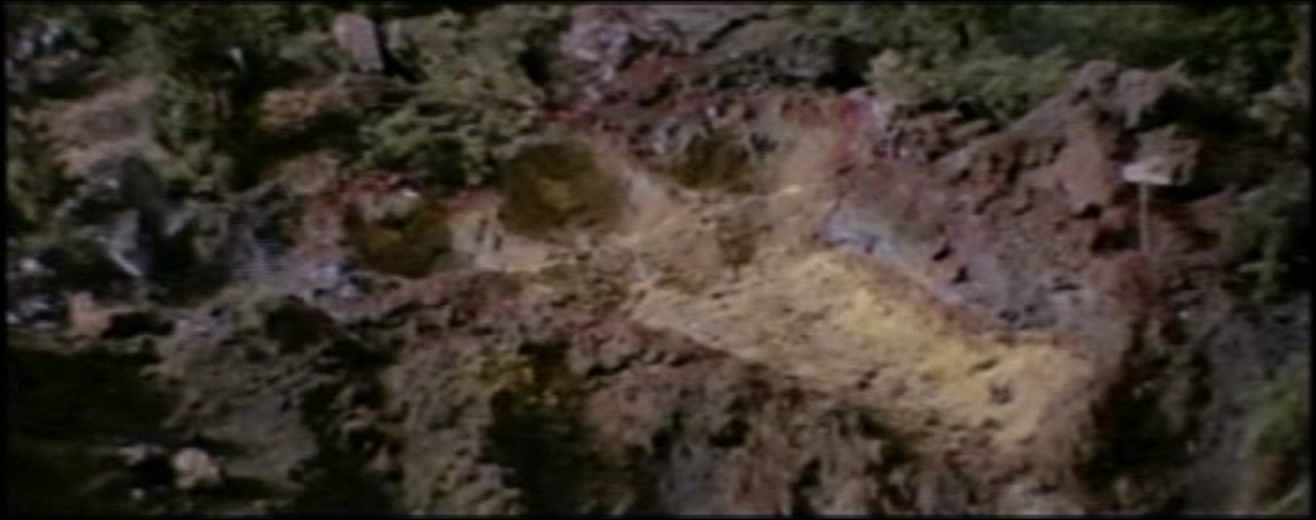
Guilala's initial appearance is very similar to Godzilla's, appearing over the top of a hill to give it scale. This is forty-five minutes into the film, perhaps the longest we've had to wait to see a titular monster in a kaiju film. Guilala's dorsal fin glows, like Godzilla's. Instead of doing so when it's about to breathe atomic fire, Guilala's is sort of an indicator as to its energy level. But it only shows up once, is discussed later, and does not impact the story at all. Like the two deely boppers on its head, the glowing shell seems to be there for visual interest. Guilala's roar seems to be a hoarse guy shouting RAAAAAR, possibly into a coffee can.
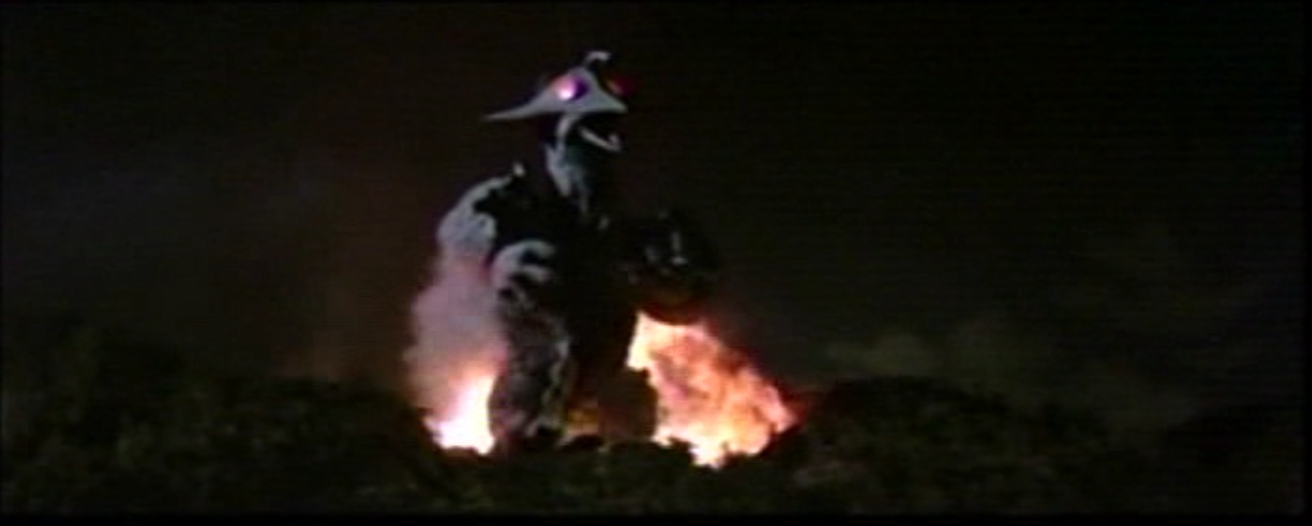
Guilala's initial breakout takes place on Mt. Hakone, which is a bit of an odd place for a space agency, unless it's been deliberately located on the Izu Penninsula. Still, it's quite close to all monster's favorite stoming ground, Tokyo. Scenes of people fleeing while Guilala marches on Tokyo are brief. The film isn't interested in showing us the human cost of the monster's rampage.
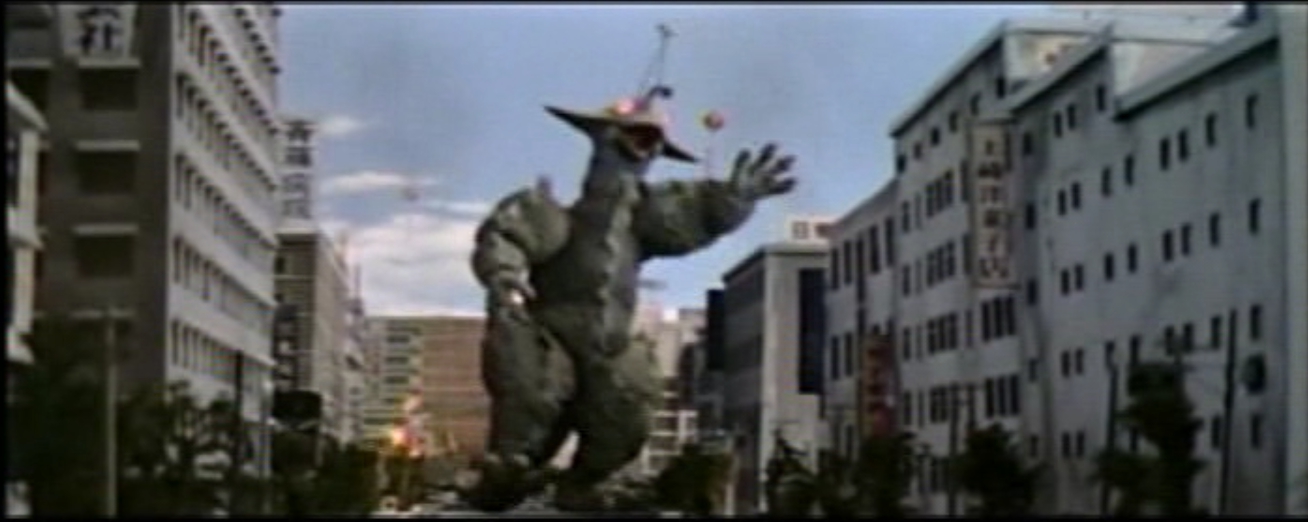
The military is, of course, completely ineffective. Guilala stomps on tanks, blows fireballs at them, and swats Starfighters out of the sky, even though they shouldn't get close enough to let it reach them. Two smash straight into Guilala's head.
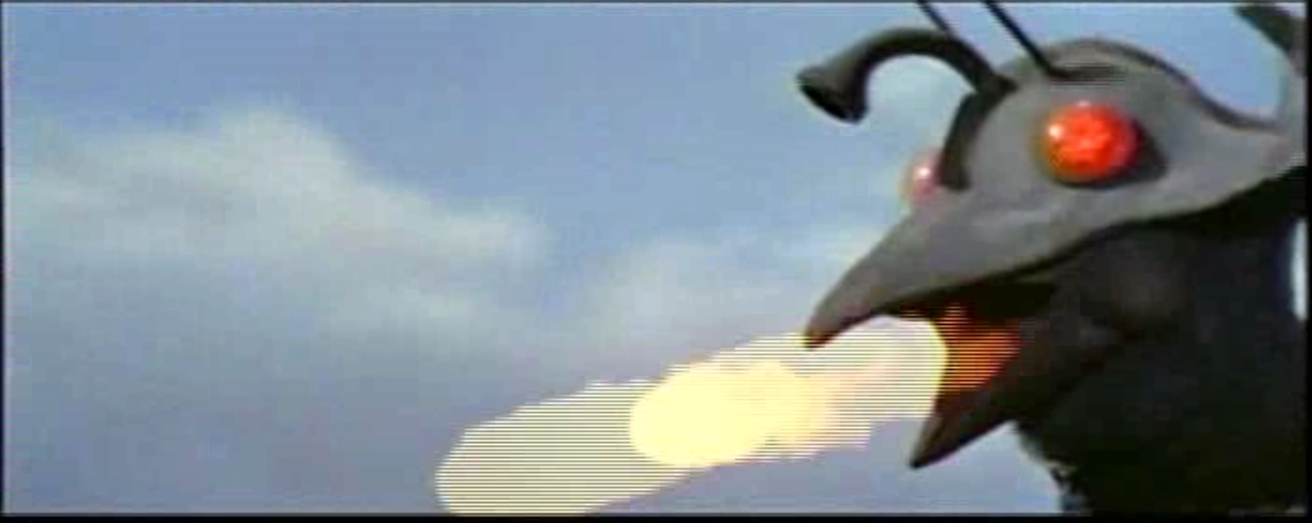
Shochiku is not above stealing a few bits from their favorite kaiju films. The military deploys their own version of the heat ray/maser shown in War of the Gargantuas and several subsequent Toho productions.

But there are some innovations, which is why it's always interesting to watch a new studio attempt a man in a rubber suit film. As it later echoed in Pacific Rim, Guilala picks up an oil tanker and throws it.
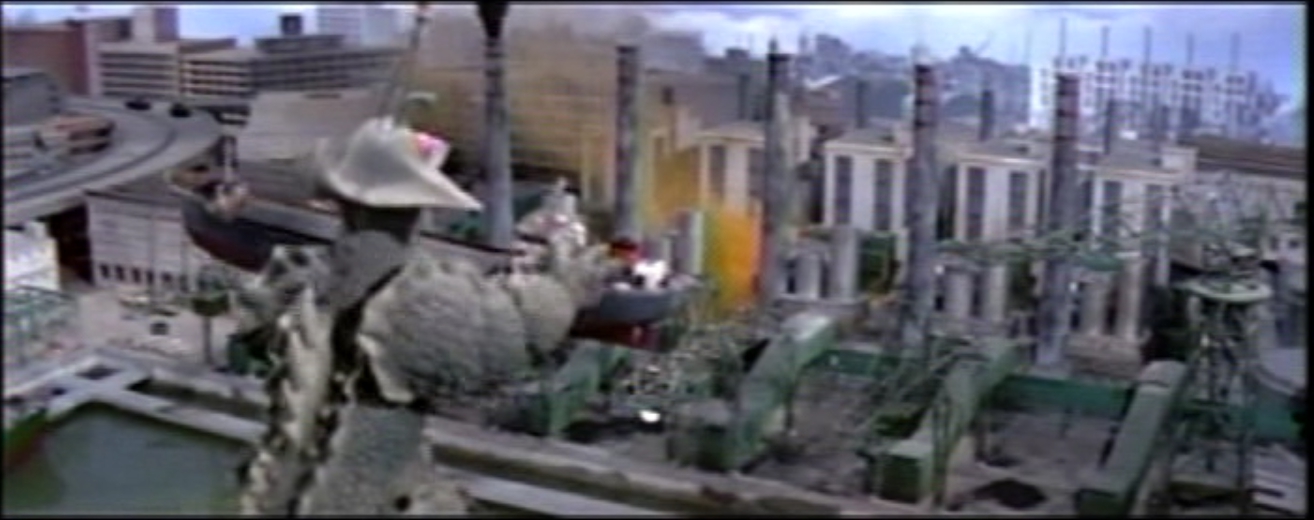
Of course, the monster must have a weakness, and Guilala's is the ore that encased it while in space. This is recreated as the jaw-breaking Guilalanium, which of course proves to be the giant monster's downfall. Like Gamera, Guilala is after energy. Once it has got enough, it turns into a huge, red ball and floats off. Because just having fire breath and some sort of glowing energy shield isn't enough.
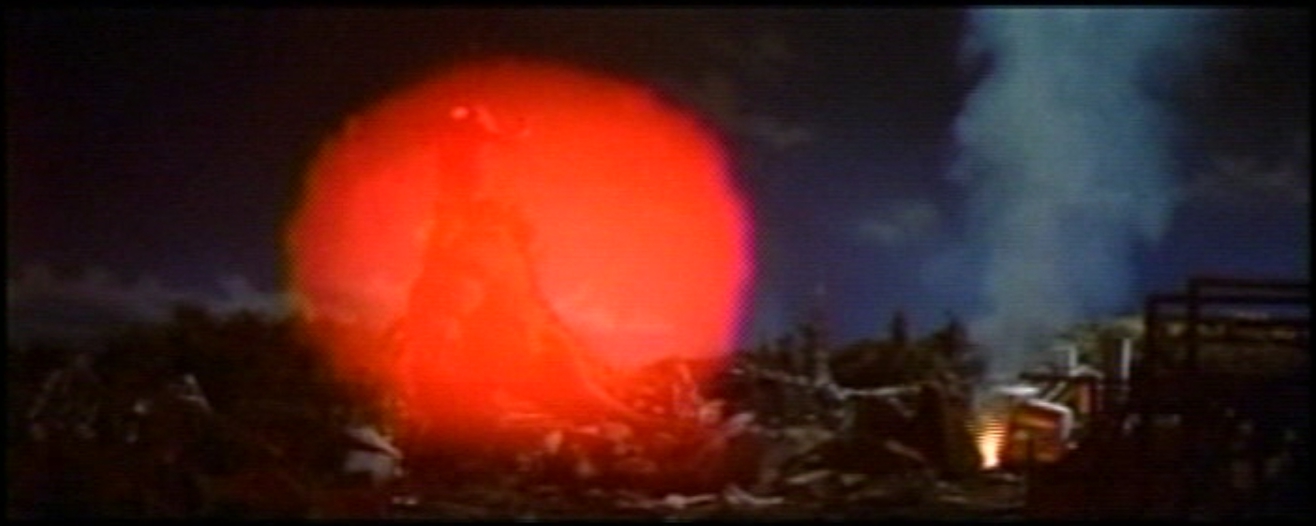
Ultimately, the monster's hunger for energy is its downfall. It is lured away from the Fuji Aeronautical Flight Center by a pair of guys pulling a reactor core on a jeep. This gives everyone time to load their air squadrons with the Guilalanium. As they pelt it with missiles, the monster begins to foam, as if they were hitting it with cream pies. In a spectacular bit of poor editing, as Guilala is layered in foam we cut back to a pair of suits. “No effect yet,” one tells the other. Guilala, coated in shaving foam at this point, lets out a last fireball, destroying one more plane, then shrinks under a blanket of foam until it's once again a small oval.
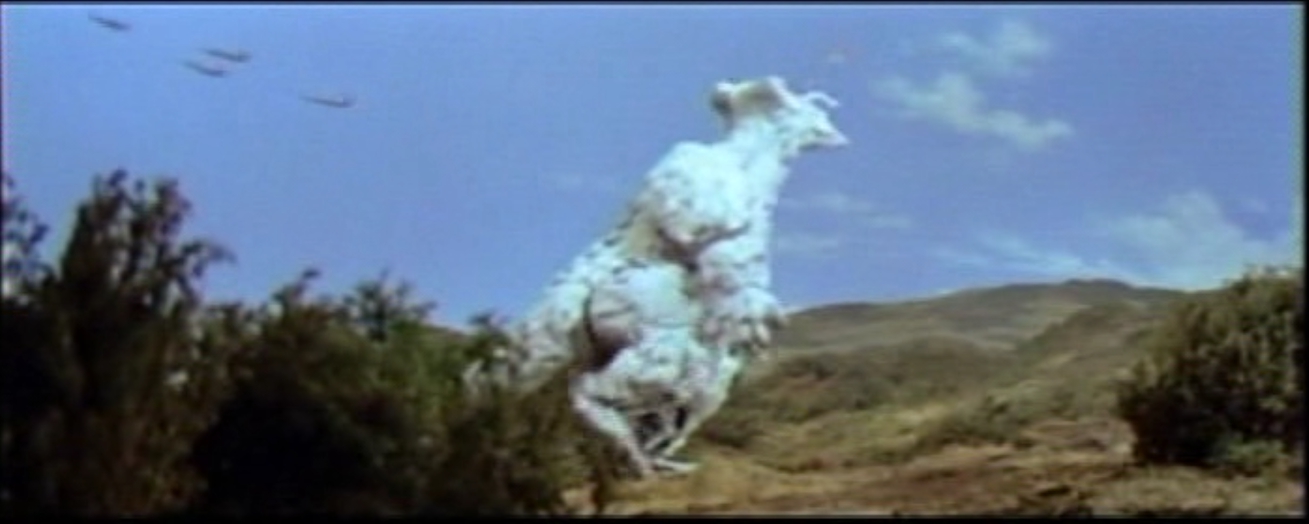
The tiny remnant is placed in a rocket and sent into space. And everything is all better.
Giant Space Monster Guilala is a faltering first step by a studio that had never made a monster film before. It can't decide what it wants to be, a space adventure or a monster movie, and is unsatisfying in either. But it's fascinating for it's craziness. Loading the nuclear fuel into the back of a station wagon? Guilala's unexplained and unnecessary ability to turn into a ball of energy? AAB Gamma's plot-consuming back and forth of to the Moon, and then getting rescued. Which would be fine in a space movie. That's why people go to see a space movie. But as the lead-in to Sometimes I feel like this film was two different pitch scrips that were inexpertly stitched together to form one science fiction movie that was true to neither premise.
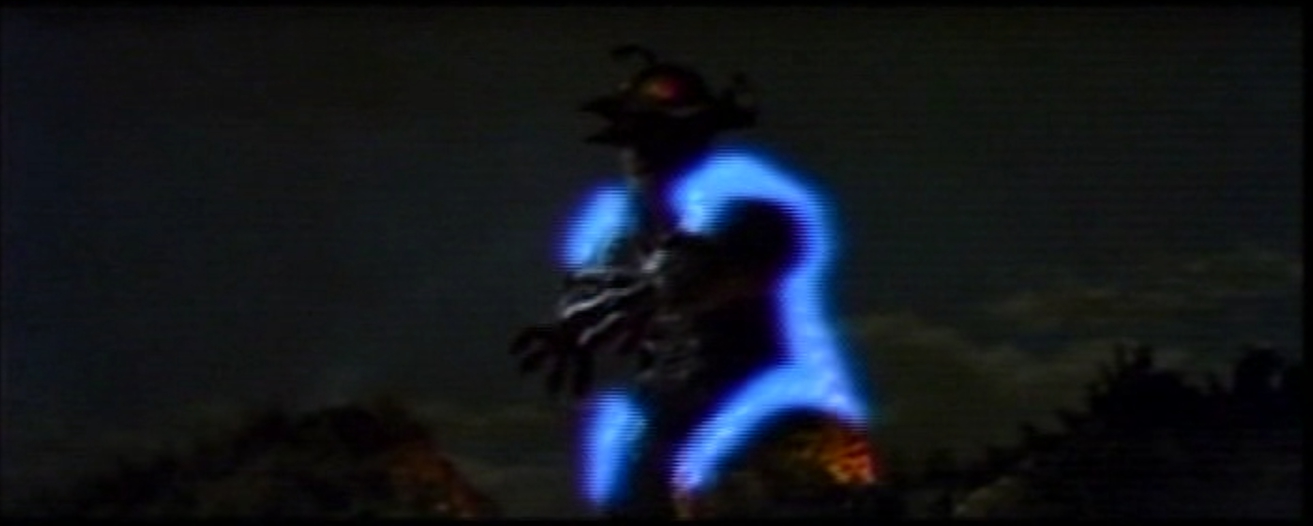
Guilala's rampage is pretty good, and it steps back to Toho's older films, with the planes flying close enough to be swatted down. And there is a bit more interaction with the scenery, specifically when it throws an oil tanker into the cityscape. Unfortunately, they keep cutting away from it, to pursue the story of the humans looking for a way to defeat it. Longer blocks of both, I think, would have kept my attention better.
I hope you have enjoyed your monstrous helping of Thanksgiving turkey. Next, another Japanese studio, Nikkatsu, tries their hand at the genre.
No comments:
Post a Comment